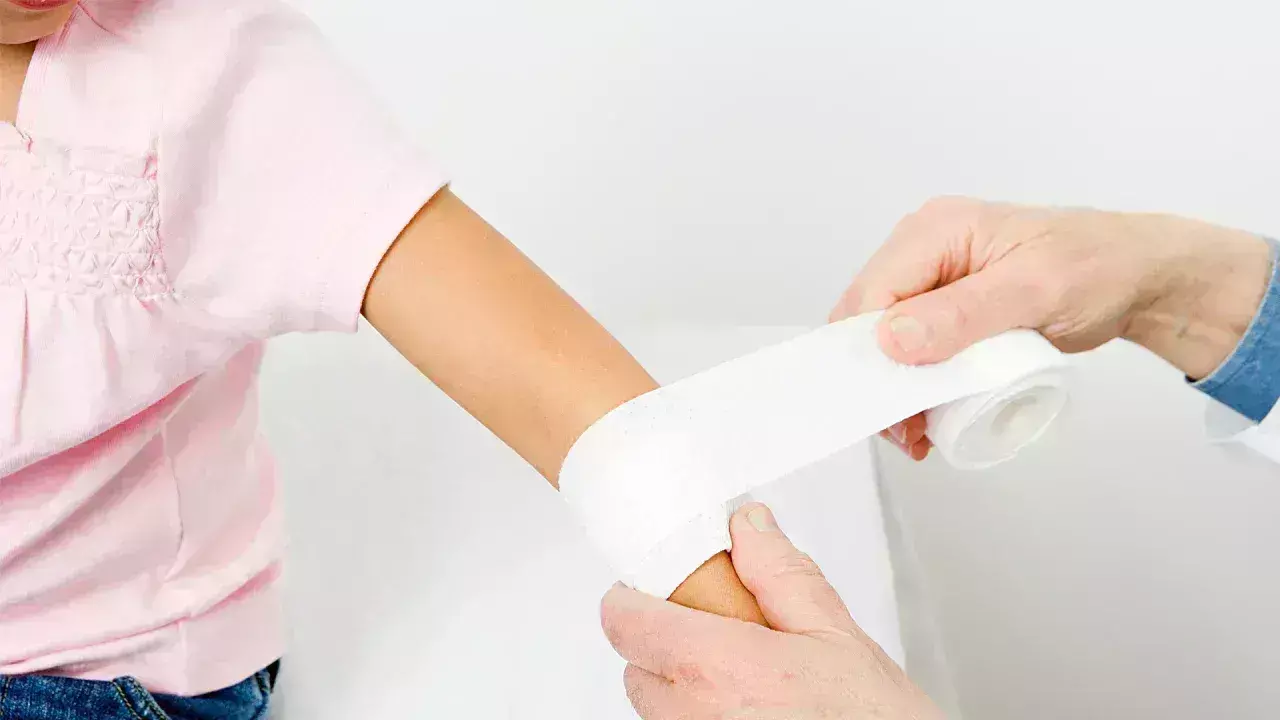- Home
- Medical news & Guidelines
- Anesthesiology
- Cardiology and CTVS
- Critical Care
- Dentistry
- Dermatology
- Diabetes and Endocrinology
- ENT
- Gastroenterology
- Medicine
- Nephrology
- Neurology
- Obstretics-Gynaecology
- Oncology
- Ophthalmology
- Orthopaedics
- Pediatrics-Neonatology
- Psychiatry
- Pulmonology
- Radiology
- Surgery
- Urology
- Laboratory Medicine
- Diet
- Nursing
- Paramedical
- Physiotherapy
- Health news
- Fact Check
- Bone Health Fact Check
- Brain Health Fact Check
- Cancer Related Fact Check
- Child Care Fact Check
- Dental and oral health fact check
- Diabetes and metabolic health fact check
- Diet and Nutrition Fact Check
- Eye and ENT Care Fact Check
- Fitness fact check
- Gut health fact check
- Heart health fact check
- Kidney health fact check
- Medical education fact check
- Men's health fact check
- Respiratory fact check
- Skin and hair care fact check
- Vaccine and Immunization fact check
- Women's health fact check
- AYUSH
- State News
- Andaman and Nicobar Islands
- Andhra Pradesh
- Arunachal Pradesh
- Assam
- Bihar
- Chandigarh
- Chattisgarh
- Dadra and Nagar Haveli
- Daman and Diu
- Delhi
- Goa
- Gujarat
- Haryana
- Himachal Pradesh
- Jammu & Kashmir
- Jharkhand
- Karnataka
- Kerala
- Ladakh
- Lakshadweep
- Madhya Pradesh
- Maharashtra
- Manipur
- Meghalaya
- Mizoram
- Nagaland
- Odisha
- Puducherry
- Punjab
- Rajasthan
- Sikkim
- Tamil Nadu
- Telangana
- Tripura
- Uttar Pradesh
- Uttrakhand
- West Bengal
- Medical Education
- Industry
Hydrosurgical burn debridement tied to better surgery scar quality and pliability

was better for hydrosurgically debrided burn
Netherlands: In a new study conducted by Catherine M. Legemate and team, it was shown that scar quality and pliability were improved one year after surgery in hydrosurgically debrided burns, most likely due to improved histological preservation of the dermis. The findings of this study were published in the British Journal of Surgery on 3rd March 2022.
The cornerstone of burn surgery is tangential excision of burnt tissue followed by skin grafting. The use of hydrosurgery for tangential excision has grown in popularity, with the theory that better preservation of critical skin tissue lowers scarring. The purpose of this study was to examine scar quality before split-skin grafting following hydrosurgical vs traditional debridement.
This was in patients with split-skin grafting burns, a double-blind randomized within-patient multicenter controlled study was done. One wound region was subjected to hydrosurgical debridement, while the other was subjected to Weck knife debridement. The primary outcome was scar quality at 12 months, which was measured using the observer component of the Patient and Observer Scar Assessment Scale (POSAS). Complications, scar quality, pliability, color, and histology dermis preservation were all secondary outcomes.
The results of this study stated as follow:
1. A total of 137 patients were randomly assigned.
2. Scars from hydrosurgically debrided wounds had a lower POSAS observer total item score (mean 2.42 against 2.54) and overall opinion score (mean 3.08 versus 3.30) at 12 months.
3. The hydrosurgically debrided wounds had considerably improved scar quality and pliability parameters.
4. The incidence of complications did not change between the two therapies.
5. Hydrosurgery retained considerably more dermis histologically.
In conclusion, the findings of this study point out the efficiency of hydrosurgical debridement over the conventional method and how it should be taken as the primary go-to technique for debridement.
References:
Legemate, C. M., Kwa, K. A. A., Goei, H., Pijpe, A., Middelkoop, E., van Zuijlen, P. P. M., Beerthuizen, G. I. J. M., Nieuwenhuis, M. K., van Baar, M. E., van der Vlies, C. H., Dokter, J., Gardien, K. L. M., Hiddingh, J., Hofland, H. W. C., Lucas, Y., Meij-de Vries, A., Nijhuis, T. H. J., Oen, I. M. M. H., … Roodbergen, D. T. (2022). Hydrosurgical and conventional debridement of burns: randomized clinical trial. In British Journal of Surgery (Vol. 109, Issue 4, pp. 332–339). Oxford University Press (OUP). https://doi.org/10.1093/bjs/znab470
Keywords: wound debridement, scar, dermis, skin, hydrosurgery, split-skin, surgery, burn, dressing, vacuum, fire accident, burn injury, pliability, British Journal of Surgery
Medical Dialogues consists of a team of passionate medical/scientific writers, led by doctors and healthcare researchers. Our team efforts to bring you updated and timely news about the important happenings of the medical and healthcare sector. Our editorial team can be reached at editorial@medicaldialogues.in.
Dr Kamal Kant Kohli-MBBS, DTCD- a chest specialist with more than 30 years of practice and a flair for writing clinical articles, Dr Kamal Kant Kohli joined Medical Dialogues as a Chief Editor of Medical News. Besides writing articles, as an editor, he proofreads and verifies all the medical content published on Medical Dialogues including those coming from journals, studies,medical conferences,guidelines etc. Email: drkohli@medicaldialogues.in. Contact no. 011-43720751


